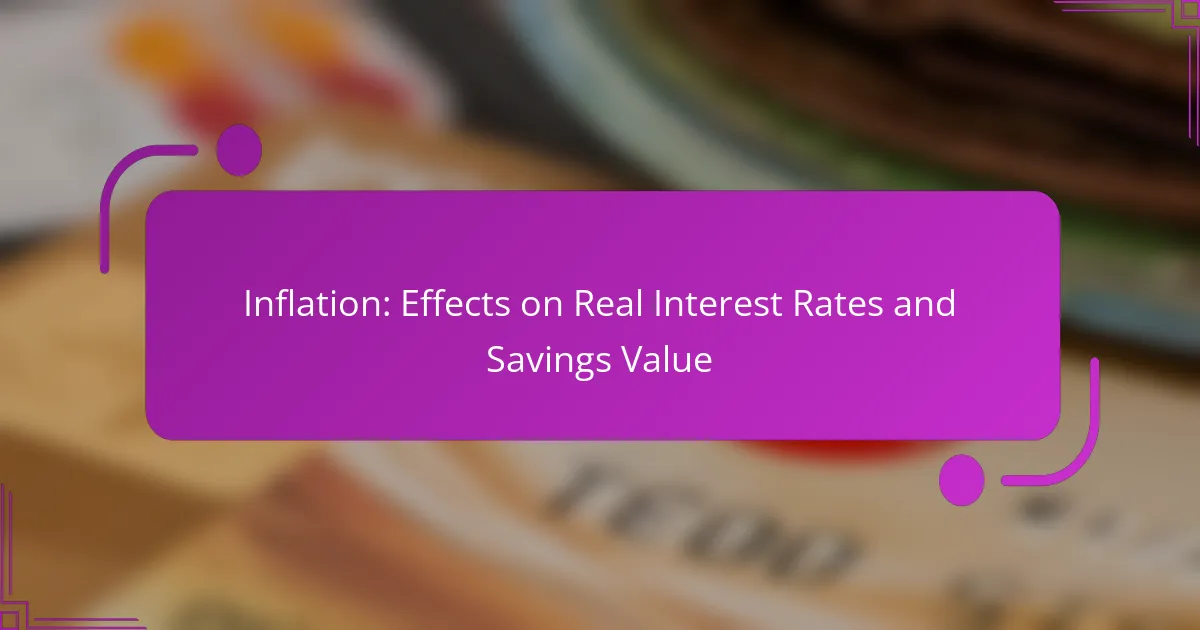Interest earned is a crucial aspect of finance, determined by the principal amount, interest rate, and investment duration. The two main calculation methods, simple and compound interest, offer different benefits and growth potential. By grasping the factors influencing interest, such as timeframes and rates, individuals can optimize their financial strategies and enhance their returns.

How is interest earned calculated?
Interest earned is calculated based on the principal amount, the interest rate, and the time period for which the money is invested or borrowed. The two primary methods for calculating interest are simple interest and compound interest, each with distinct formulas and implications for growth over time.
Simple interest calculation
Simple interest is calculated using the formula: Interest = Principal x Rate x Time. This method is straightforward, where the interest earned is a fixed percentage of the principal over a specified time period.
For example, if you invest $1,000 at an interest rate of 5% for 3 years, the interest earned would be $150. This method is commonly used for short-term loans or investments.
Compound interest calculation
Compound interest is calculated using the formula: Interest = Principal x (1 + Rate/Number of Compounding Periods)^(Number of Compounding Periods x Time) – Principal. This method takes into account not only the initial principal but also the interest that accumulates over time.
For instance, if you invest $1,000 at a 5% annual interest rate compounded annually for 3 years, you would earn approximately $157.63 in interest. Compound interest can significantly increase returns over longer periods, making it a preferred choice for savings accounts and long-term investments.
Annual percentage yield (APY)
The annual percentage yield (APY) represents the total amount of interest earned on an investment in one year, taking into account the effects of compounding. APY is expressed as a percentage and provides a standardized way to compare different investment options.
For example, if an account offers an APY of 5%, it means that if you invest $1,000, you would earn around $50 in interest over a year, assuming no withdrawals. Understanding APY is crucial for evaluating savings accounts, certificates of deposit, and other interest-bearing products.

What factors influence interest earned?
The interest earned on an investment or savings account is influenced by several key factors, including the principal amount, interest rate, and time period. Understanding these elements can help you maximize your returns and make informed financial decisions.
Principal amount
The principal amount is the initial sum of money that is invested or deposited. This amount serves as the base for calculating interest, meaning that a higher principal will generally yield more interest over time. For example, investing $10,000 will earn more interest than investing $1,000, assuming the same interest rate and time period.
When considering investments, it’s important to assess how much you can afford to invest initially. This decision can significantly impact your overall earnings, especially in accounts with compound interest.
Interest rate
The interest rate is the percentage at which interest is calculated on the principal amount. Higher interest rates typically lead to greater earnings, making it crucial to shop around for the best rates available. For instance, a savings account offering 2% interest will earn more than one offering 0.5% over the same period.
Interest rates can vary widely based on the type of account or investment vehicle. Fixed rates provide stability, while variable rates can fluctuate, potentially increasing or decreasing your earnings over time. Always consider the type of interest rate when evaluating potential returns.
Time period
The time period is the duration for which the money is invested or deposited. The longer the time period, the more interest can accumulate, particularly in accounts that compound interest. For example, an investment held for 10 years will generally earn more interest than one held for just 1 year, even at the same interest rate.
When planning your investments, consider your financial goals and how long you can commit your funds. Short-term investments may yield lower returns compared to long-term investments, which can take advantage of compounding effects. Be mindful of any penalties for early withdrawal that could affect your overall earnings.

What are the timeframes for earning interest?
Interest can be earned over various timeframes, including daily, monthly, and annually. Understanding these timeframes helps individuals choose the best savings or investment options based on their financial goals.
Daily interest accrual
Daily interest accrual means that interest is calculated and added to the principal balance every day. This method is often used by savings accounts and some investment products, allowing for faster growth of the investment due to the effects of compounding.
For example, if you have a savings account with a daily interest rate of 0.01%, your balance will increase slightly each day. This can lead to a noticeable difference over time, especially with larger sums of money.
Monthly interest accrual
Monthly interest accrual calculates interest on a monthly basis, adding it to the principal at the end of each month. This is common in many fixed-term deposits and some loans, providing a predictable return on investment.
For instance, if you invest $1,000 at an annual interest rate of 6%, you would earn approximately $5 each month. This method allows for easier tracking of earnings and can be beneficial for budgeting purposes.
Annual interest accrual
Annual interest accrual means that interest is calculated and paid out once a year. This is typical for certain types of bonds and long-term savings accounts. While it may seem less frequent, it can still provide significant returns, especially with higher interest rates.
For example, if you invest $5,000 in a bond with a 5% annual interest rate, you would earn $250 at the end of the year. This method is straightforward but may not take full advantage of compounding compared to more frequent accrual methods.

How do banks calculate interest on savings accounts?
Banks calculate interest on savings accounts using various methods that determine how much interest you earn based on your account balance. The most common methods include the daily balance method and the monthly average method, each with its own implications for how interest accumulates over time.
Daily balance method
The daily balance method calculates interest based on the balance in your savings account at the end of each day. This means that if your balance fluctuates throughout the month, each day’s balance is considered for interest calculations.
For example, if you maintain a balance of $1,000 for 15 days and then drop to $500 for the remaining 15 days, the bank will calculate interest based on those daily balances. This method can be beneficial if you keep a higher balance consistently, as it maximizes the interest earned.
To ensure you earn the most interest, avoid withdrawing funds frequently. Instead, consider maintaining a stable balance, especially during the interest calculation periods.
Monthly average method
The monthly average method calculates interest based on the average balance in your account over the month. This method takes the total balance for each day, sums it up, and divides it by the number of days in the month.
For instance, if your savings account balance varies significantly, this method may result in lower interest compared to the daily balance method. If you have a high balance for only part of the month, the average may not reflect that higher amount effectively.
To optimize your interest earnings with this method, try to maintain a higher balance consistently throughout the month. Be aware that frequent withdrawals can lower your average balance and, consequently, the interest you earn.

What are the best practices for maximizing interest earned?
To maximize interest earned, focus on selecting high-yield accounts, making regular contributions, and understanding how compounding frequency affects your returns. These strategies can significantly enhance your savings growth over time.
Choosing high-yield savings accounts
Selecting a high-yield savings account is crucial for maximizing interest. These accounts typically offer interest rates that are several times higher than traditional savings accounts, often ranging from 1% to 3% APY. Look for accounts with no monthly fees and favorable terms.
When comparing options, consider online banks or credit unions, as they often provide better rates than brick-and-mortar institutions. Always read the fine print to understand any conditions that may affect your interest earnings.
Regular contributions
Making regular contributions to your savings can significantly boost the interest earned over time. Even small, consistent deposits can add up, especially when combined with compounding interest. Aim to set aside a fixed amount each month to take advantage of this effect.
Consider automating your contributions to ensure you consistently save without having to think about it. This habit can lead to substantial growth in your savings, especially if you increase your contributions over time.
Understanding compounding frequency
Compounding frequency refers to how often interest is calculated and added to your account balance. The more frequently interest is compounded, the more you earn. Common compounding intervals include daily, monthly, and annually, with daily compounding typically yielding the highest returns.
To maximize your interest, choose accounts that offer daily compounding. This means your interest earns interest more often, leading to faster growth of your savings. Always check the compounding terms when selecting an account to ensure you’re getting the best deal.



